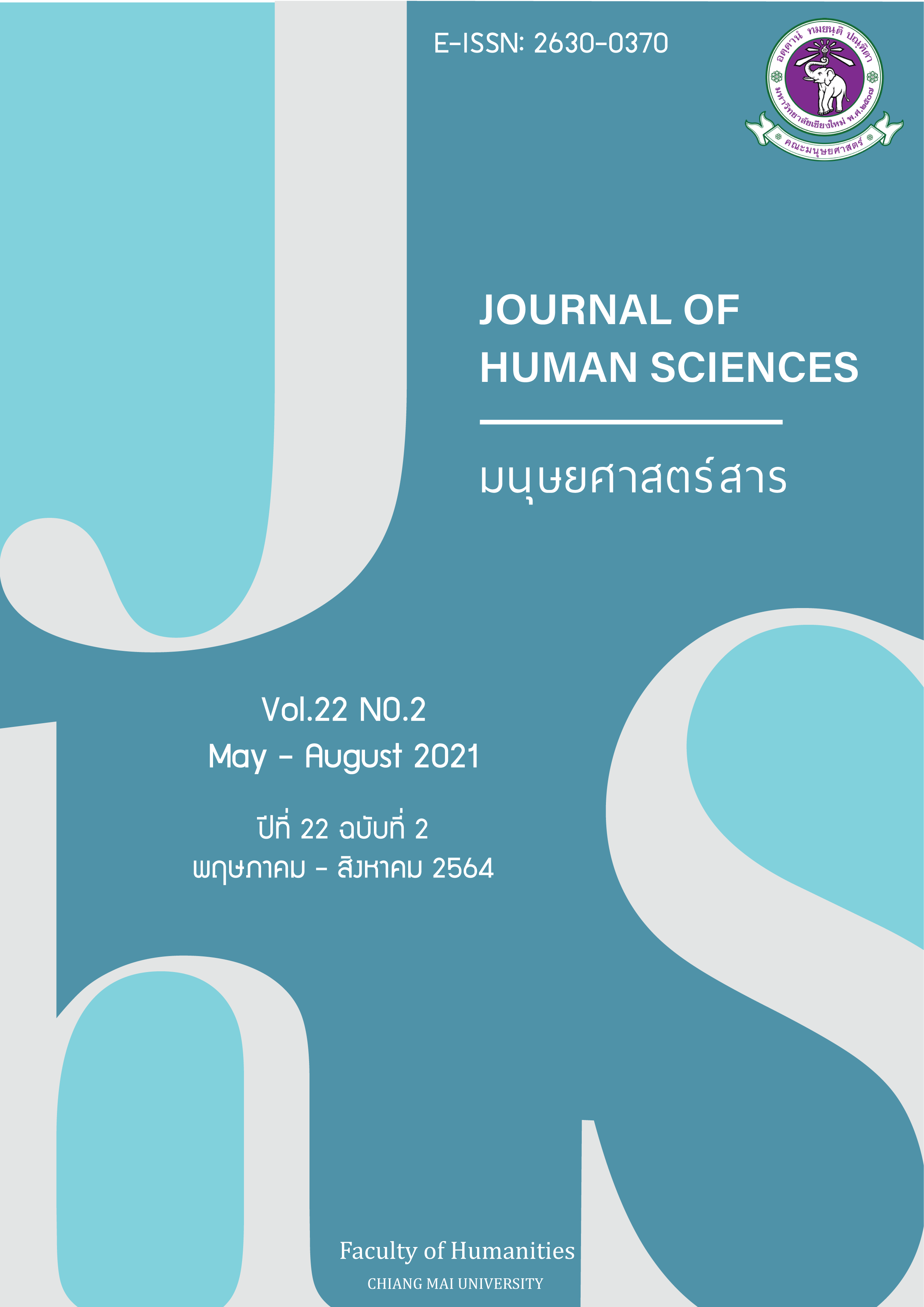การเปลี่ยนแปลงของสถานะและบทบาทของจักรพรรดิญี่ปุ่นที่ส่งผลต่อการสละราชสมบัติ ในประวัติศาสตร์ญี่ปุ่น
Main Article Content
บทคัดย่อ
ราชวงศ์ยามาโตะของประเทศญี่ปุ่นเป็นราชวงศ์เดียวในโลกที่มีการสืบทอดต่อเนื่องมาจนถึงปัจจุบัน และยังเป็นราชวงศ์ที่มีธรรมเนียมปฏิบัติอย่างหนึ่งคือการสละราชสมบัติของจักรพรรดิในขณะที่ยังมีพระชนม์ชีพซึ่งราชวงศ์ยามาโตะมีการสละราชสมบัติของจักรพรรดิ 64 พระองค์ เมื่อเริ่มต้นราชวงศ์ยามาโตะนั้น จักรพรรดิมีบทบาทเป็นผู้นำทัพและมีสถานะเป็นผู้นำพิธีกรรมจากการเป็นผู้สืบทอดมาจากเทพเจ้าอามาเตราซุ การสละราชสมบัติในช่วงต้นราชวงศ์จึงเป็นการสละราชสมบัติเพื่อรักษาราชวงศ์ตั้งแต่จักรพรรดินีจิโตเป็นต้นมา หลังจากการเปลี่ยนแปลงการปกครองในสมัยต่างๆที่ผู้ปกครองผลัดกันขึ้นมามีอำนาจนั้นส่งผลต่อการสละราชสมบัติดังเช่นการสละราชสมบัติเพื่อรักษาอำนาจของขุนนางตระกูลฟุจิวาระในสมัยเฮอัน การสละราชสมบัติเพื่อรักษาอำนาจของโจโกในช่วงปลายสมัยเฮอันและการสละราชสมบัติโดยการจัดการของรัฐบาลทหารเพื่อรักษาอำนาจของทหารตั้งแต่สมัยคามาคุระจนถึงสมัยเอโดะ ล้วนแล้วแต่เป็นการสละราชสมบัติเพื่อรักษาอำนาจของขุนนางและทหาร ส่งผลให้บทบาทของจักรพรรดิเป็นเพียงผู้นำทางพิธีกรรม มีสถานะเป็นผู้สืบทอดจากเทพเจ้ามีหน้าที่สวดอ้อนวอนให้ประเทศมีความสงบ และไม่ได้มีบทบาทเป็นผู้ปกครอง นอกจากนี้ยังมีธรรมเนียมการครองราชย์ของจักรพรรดิวัยไม่เกิน 15 ชันษาแสดงให้เห็นว่าจักรพรรดิเป็นเพียง“สัญลักษณ์”ไม่ได้ส่งผลต่อการปกครองตั้งแต่สมัยเฮอันเป็นมาจนถึงปลายสมัยเอโดะ ในการปกครองสมัยใหม่ตั้งแต่สมัยเมจินั้น รัฐบาลทำให้ภาพของจักรพรรดิกลับไปสู่การเป็นผู้นำทัพและเป็นผู้นำทางพิธีกรรมรวมถึงกำหนดในรัฐธรรมนูญไม่ให้มีการสละราชสมบัติดังที่เคยปฏิบัติ หลังสงครามโลกครั้งที่สองรัฐธรรมนูญแห่งประเทศญี่ปุ่นไม่กำหนดให้จักรพรรดิสามารถสละราชสมบัติได้เช่นกันและกำหนดให้จักรพรรดิเป็น “สัญลักษณ์” ของประเทศ ซึ่งการสละราชสมบัติในสมัยเฮเซเป็นไปเพื่อทำให้การปฏิบัติพระราชกรณียกิจในฐานะสัญลักษณ์นั้นมีความสมบูรณ์ ถึงแม้โดยรวมจักรพรรดิญี่ปุ่นจะไม่มีอำนาจในการปกครองตั้งแต่สมัยเฮอัน และหลายครั้งต้องสละราชสมบัติตามความประสงค์ของผู้มีอำนาจในสมัยต่างๆ จนกลายเป็นธรรมเนียมปฏิบัติของจักรพรรดิ และมีบทบาทเป็นเพียงผู้นำทางพิธีกรรมที่เกี่ยวกับเทพเจ้าอามาเตราซุในฐานะตัวแทนของราชวงศ์นั้น กลายเป็นปัจจัยที่ส่งผลให้ราชวงศ์ยามาโตะสามารถดำเนินสืบทอดมายาวนานจนถึงปัจจุบัน
Article Details
เอกสารอ้างอิง
Association of Historical Science. (Ed.). (2008). The emperors and emperor system. Tokyo:
Tokyo University Press.
Chadani, S. (2017). The establishment of the emperor system’s symbol. Tokyo: NHK.
Der Arslanian, B. (2020). Abdication of Emperor Akihito. Bangkok: Thailand Research Fund.
Fujimoto, Y. (2017). The knowledge of Imperial household system. Tokyo: Shinshashinhousha.
Fujiwara, K. (Ed.). (2014). Trace back the history of 125 emperors from important events. Tokyo: Yosensha.
Hongo, K. (2017). What is abdication for emperors?. Tokyo: East Press.
Hongo, K. (2018). Japanese history of retired emperors. Tokyo: Chuuoushinsho Rakure.
Iida, T. (2018). Demise of emperor abdication in Heisei era. Kyoto: Shouwadou.
Ikegami, A. (2018). What is the emperor?. Tokyo: PHP Kenkyusho.
International Shinto Studies Association. (2003). Imperial household and Ise shrine. Tokyo: Tachibana.
Kon, M. (2012). Fujiwara no Yoshifusa who brought stability to the emperor system. Tokyo: Yamakawa.
Okado, O. (2018). Introduction to the imperial household for 14 years old. Tokyo: Ohta.
Shintani, T. (2017). The secrets of Japanese history in Japanese shrine (7th ed.). Tokyo: Yousensha.
Takamori, A. (2016). The truth of abdication while the emperors were alive. Tokyo: Gentousha.
Takamori, A. (2018). A detail which we do not know about the emperors and the imperial household. Tokyo: SB Visual Shinsho.
Takemitsu, M. (2018). The knowledge of emperors via manga. Tokyo: Ikeda Shoten.
Tokoro, I. (2017). Emperor symbol - the truth of old age abdication. Tokyo: KK bestsellers.
Yagashiwa, T. (2016). Japanese people don’t know about emperor and abdication. Tokyo: Futabasha.
Yakubo, K. (Ed.). (2019). Emperors’ secret ceremonies and enigmas. Tokyo: Shogakukan.
Yamashita, S. (Ed.). (2017). 100 words of his majesty the emperor. Tokyo: Takarajimasha.


